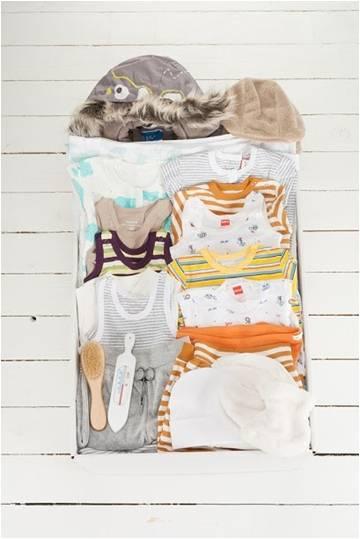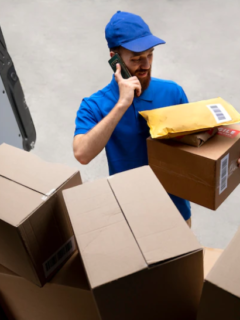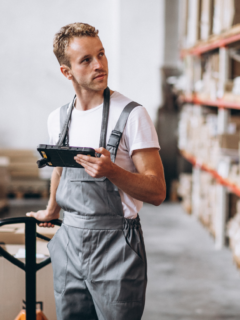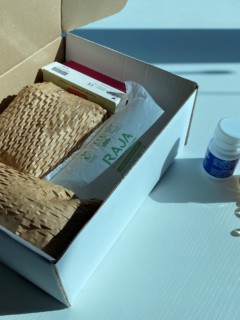It’s starting to get cold and so this question becomes more topical than ever:
Does cardboard lower the infant mortality rate?
For 75 years, Finnish mothers have been receiving a cardboard box from the state.
It is a starter kit that contains clothes, sheets, toys and can often be used as a bed.
Many say it has helped Finland achieve the lowest infant mortality rate in the world.
The BBC blog post about these boxes has been clicked on 10 million times and has opened up numerous discussions.
Image © Finnish Baby Box Ltd
Cardboard cots?
The boxes donated by the Finnish government, a kind of Moses basket for the first months of life, can also be bought online from companies such as Finnish Baby Box.
Anssi Okkonnen, founder of the company Finnish Baby Box, told our colleagues at Rajapack UK:
“The Finnish Baby Box is a great starter kit for parents. It contains a selection of high-quality indoor and outdoor clothes that will help dress the baby up to 9 months, hygiene products such as nail clippers, a bath thermometer…And the baby can sleep there because it comes already equipped with a sheet and mattress. The box is a safe and cosy place to rest, and it is also extremely comfortable. It allows you to have the baby close by for night feeding without putting him in the parents’ bed.”
The reason why this story fascinates everyone is the material. Everyone imagines prams and cots made of plastic and wood, not cardboard.
People have never associated cardboard with protecting children. Yet its versatility allows us to safely ship the most fragile objects every day.
The statistics speak for themselves. Ninety per cent of parcels shipped every day are protected by cardboard packaging. This is an incredible percentage when you consider the variety of goods and products handled by couriers every day.
Why cardboard?
Why do Finnish parents protect their children with cardboard and we do not?
First of all, it is useful to know the properties of the material. Cardboard is becoming stronger every day. We as Rajapack distribute triple-wave cartons that can carry a weight of 500 kg! For a child, you don’t need that much!
Besides being a durable material, it is also flexible. A box can be folded and resealed, taking up very little space.
Secondly, thanks to microwave manufacture, the cardboard contains numerous grooves, making it an excellent thermal insulator.
Thirdly, cardboard is environmentally friendly.
All cardboard boxes bearing the recycling symbol can be recycled, others are made to be biodegradable after use. Parents will then be able to dispose of them easily once the child has grown up, or, why not? They can turn them into containers for clothes, toys, etc.
Cardboard seems to be an excellent alternative to wood, plastic and Moses baskets.
Personalise the box!
Image © Finnish Baby Box Ltd
Personalisation is increasingly used in packaging. It allows companies to communicate through packages, their first contact with customers.
It can be easy for parents to customise the box, adapting it to the child’s personality and character. It can be printed with initials or can be covered with favourite designs, and then turn into a binder of memories: the first soft toy, the first shoes, the first book…
Would cardboard cots work in Italy?
Why not?
If they can protect children in Finland where temperatures drop to -50°, why wouldn’t they work in Italy? The government probably won’t give them away like in Finland, but they can be a great way to save money on a cot!
Sources:
http://www.huffingtonpost.com/2013/06/04/why-finnish-babies-sleep-_n_3385841.html
http://www.rajapacktoday.co.uk/finland-baby-boxes/
http://www.bbc.com/news/magazine-22751415
http://www.finnishbabybox.co/















